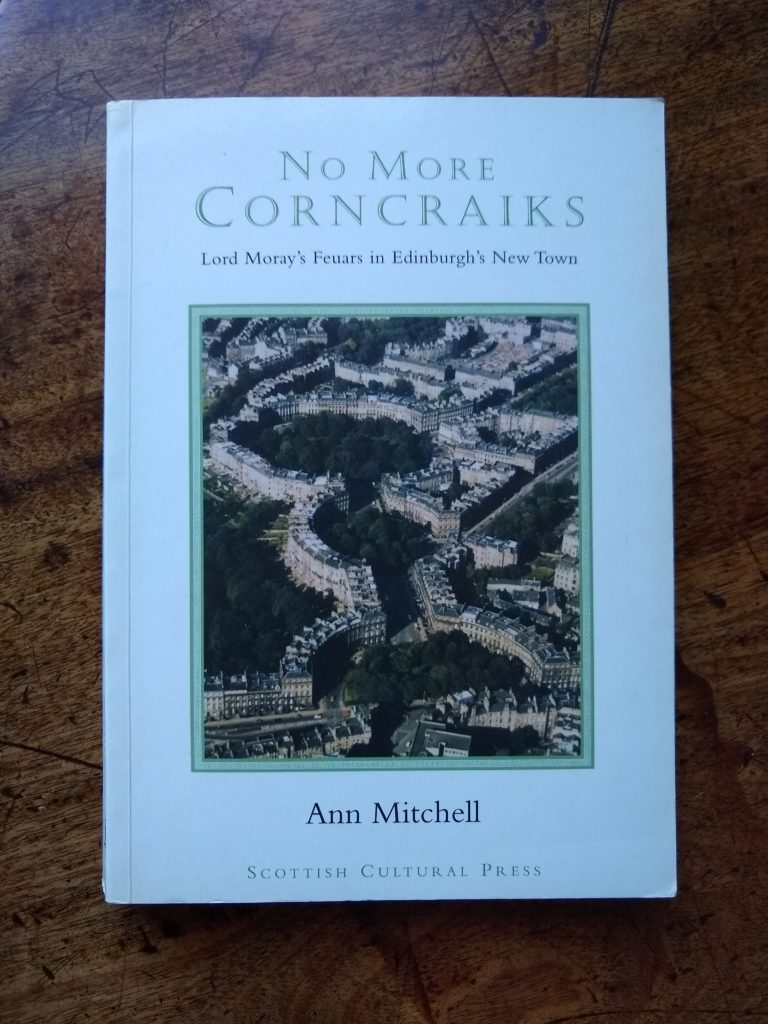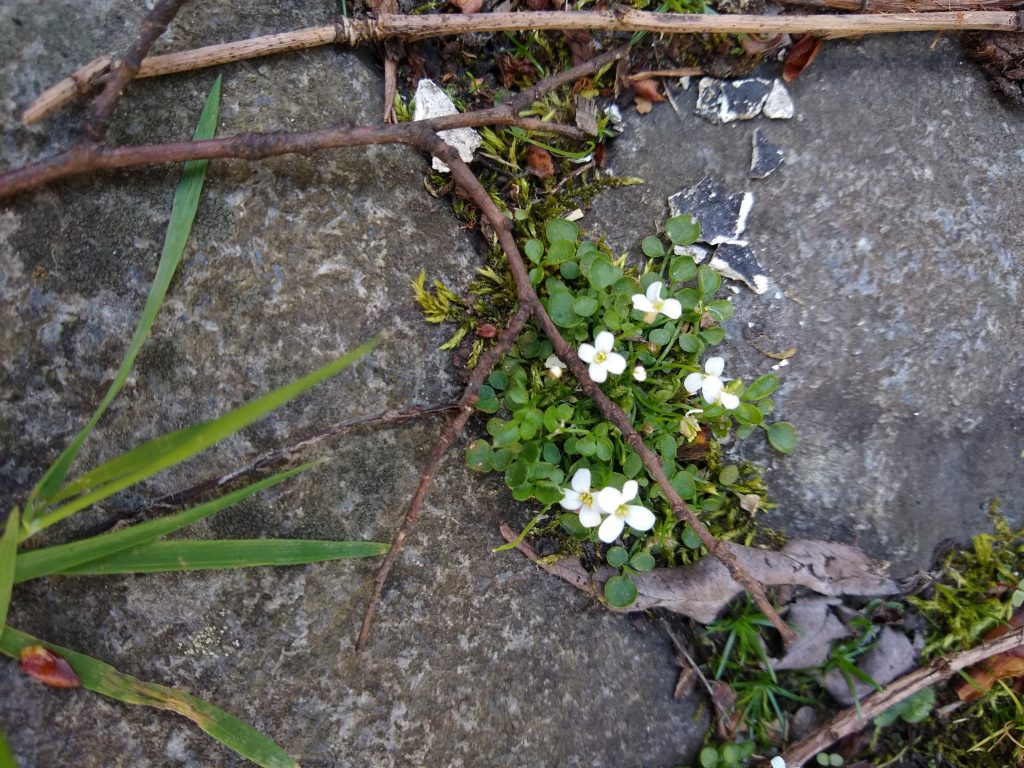Moray Place is the dodecagonal circus, 325 yards in diameter, which forms the centrepiece of that masterpiece of buildings and gardens designed by James Gillespie (Graham) in the 1820s for the tenth Earl of Moray. Until retirement one of the joys of my pedestrian commute to RBGE was my route through the grand procession of architectural showpieces – Randolph Crescent, Great Stuart Street, Ainslie Place, Moray Place and Doune Terrace – muscular Neo-Classicism that makes that of Bath look like the Gingerbread variety. This has been continued with daily lockdown walks to Wardie Bay, and at all times of year the Moray Estate is studded with interest in many fields. To begin with the horticultural: in Ainslie Place come the first signs of spring, with snowdrops and crocuses. The garden of Moray Place, except for its lofty trees, is largely concealed, but at this time of year a waft of almost over-powering orange-blossom rises from a Skimmia behind the thick holly hedge. In Doune Terrace the interest is arboricultural, though one tinged with melancholy as, year by year, I watch a handsome ash succumb to dieback; opposite it I wonder just how long a wych elm (currently in the first of its two green spring flushes, that of its immature fruit) can last. Of ornithological interest are great spotted woodpeckers, bullfinches, long-tailed tits, and a pair of mistle thrushes that once nested in one of the cast iron, anthemion-and-palmette Great Stuart Street balconies. One can also ponder on the former inhabitants of the grand houses – now mostly divided, but originally the town residences of Edinburgh lawyers and University professors and Scottish gentry. These are documented in a fascinating 1998 book No More Corncraiks, written by Ann Mitchell who had worked in the machine room at Bletchley Park and died last year at the age of 97. In Great Stuart Street it gives me a thrill to pass the house once owned by the photographic pioneer William Henry Fox-Talbot. And in Moray Place I pass the one (No. 31) owned by John Hope’s son, the chemist Thomas Charles Hope.

I always keep at least one botanical eye on the ground, as the streets also abound in interesting wild(ish) plants. Elsewhere I have written about the halophytes in the interstices of the granite setts, but on the pavement here in a few weeks’ time will appear the uncommon annual American speedwell, Veronica peregrina. At the Hope house I usually cross the street to the path surrounding the central garden, which is made up of small cobbles. It was here, last Friday, that my eye was caught by something I’d never seen there before, and which must surely be a very recent arrival. Barely protruding from the mossy crevices between the stones, extending almost as far as Doune Terrace, were tiny, four-petalled flowers, shining white, and much larger than those of the commoner whitlow grass, Erophila verna. I got to my knees to discover that it was Cardamine corymbosa, the New Zealand bittercress. This diminutive jewel is less than two centimetres high, its leaves pinnate (with three to five minute leaflets) and erect, needle-shaped pods (‘siliquae’), which contain dust-like seeds.

The plant was familiar, having been recorded as a weed at RBGE, especially in the Rock Garden, since around 1975. Whether introduced there deliberately or accidentally is unknown, but it is certainly an attractive plant, at least when viewed from the eye-level of a mouse. Over the last 30 years, as revealed in the BSBI online atlas, it has appeared over much of Britain and Ireland – in Ireland in the east and south-west, on the Isle of Man, throughout Wales, and in England from Cornwall to Kent and northwards to Northumberland. In Scotland it goes as far north as Lossiemouth, and there is even a record from the island of Oronsay (the Colonsay one). Its means of translocation is unknown, but its tiny seeds, and doubtless explosive pods, suggest that it might at least sometimes be air-borne. A more likely route, however, is through the movement of ornamentals from garden to garden or through the nursery trade. Barbara Sumner, the BSBI recorder for Vice-County 83, has kindly provided me with the Midlothian records of the plant and suggests that its 2018 appearance in her own Penicuik garden may have originated with a pot of thyme bought from Pentland Plants. Seed transfer on the feet of botanists (including my own) can also not be ruled out, as Richard Milne recorded it at King’s Buildings in 2012. Other Edinburgh records are from Morningside (Plewlands Gardens, K.T. Dawson, 2016), the New Town (Broughton Place, J. Gardner, 2016) and the Learmonth Estate in the West End (Eglinton and Glencairn Crescent gardens, R. Milne, 2020).
In 2013 Natacha Frachon, on a paper on ‘Plant health protocol for the reintroduction of native plants’ (Sibbaldia 11: 53–60) wrote that the bittercress was well-established as a weed in the RBGE nursery, but that, while there was ‘no record of its being invasive in Scotland’s native habitats’, ‘we remain cautious, and so it is removed as soon as it is seen’. The author appears to have written prematurely as, from the records cited above, it had by then already spread, though apparently largely to urban sites. While having a (Covid compliant) garden-tea near Gifford on Saturday I looked down at the path and what should I see smiling up at me but some tiny, four-petalled stars.

rosa steppanova
Thought yuo might be interested in this: It arrived in the Shetland Islands in the 1990s (I have no precise date). The late Walter Scott found it on Ward Hill (226m) on the island of Bressay. He thought it must have been in Shetland for a number of years before arriving in such an unlikey (middle of nowhere) location.